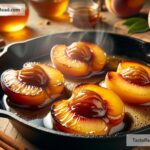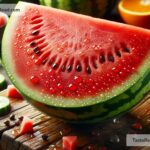Why Fruits with High Fiber Content Feel Chewy
Fruits are one of the healthiest snacks nature has to offer. They’re tasty, refreshing, and packed full of essential nutrients. But have you ever noticed how some fruits feel chewy compared to others? Bananas, for instance, easily melt in your mouth, but something like guava or dried apricots has a tougher texture that requires more chewing. The reason behind this difference lies in one important substance: fiber.
Fiber may sound like something you’d hear about in science class, but it’s actually a critical part of our diet. It’s found in all plant-based foods, including fruits, vegetables, grains, and legumes. Fiber doesn’t break down the way fats, proteins, or carbohydrates do when we eat. Instead, it moves through our digestive system mostly intact. This unique quality is great for our health, but it also affects how fruits feel in our mouths.
Understanding Fiber
Before diving into why high-fiber fruits feel chewy, let’s briefly talk about what fiber is. Fiber comes in two main types:
-
Soluble Fiber
This type of fiber dissolves in water and forms a gel-like substance in your stomach. Foods like oats, apples, and bananas are rich in soluble fiber. -
Insoluble Fiber
This fiber does not dissolve in water and stays intact as it passes through your digestive system. Insoluble fiber is what gives certain foods their tough, firm structure. Fruits like guava, pears, and berries contain a lot of this type of fiber.
Insoluble fiber is the key player behind the chewy texture of some fruits. Let’s explore why that is.
Why High-Fiber Fruits Feel Chewy
When you bite into a fruit, you’re eating a mix of water, sugar, vitamins, and plant structures that contain fiber. The fibers in fruits act like tiny scaffolding—they’re what keep the fruit’s shape stable and strong. Fruits that have more insoluble fiber have tougher plant cell walls, which makes them feel dense and chewy when you eat them.
Think about guava or an apple. Both are often described as crisp or firm because their cell walls are packed with fibers. The high amount of insoluble fiber gives these fruits their chewy bite. On the other hand, fruits like mangoes and bananas have less insoluble fiber, which makes them feel soft and smooth in your mouth.
When fruit is dried, like in the case of dried apricots or raisins, it becomes even chewier. This is because the water inside the fruit evaporates during the drying process, concentrating the fiber and sugars. The reduced moisture makes these fruits feel dense and sticky, requiring extra effort to chew.
The Benefits of Eating High-Fiber Fruits
If chewy fruits sometimes feel like extra work for your jaw, don’t worry—it’s all worth it! Fiber is incredibly beneficial to our health. Here are a few reasons to enjoy your high-fiber fruits with a smile:
-
Supports Digestion
Fiber helps to keep your digestive system working smoothly. Insoluble fiber adds bulk to your stool and prevents constipation, while soluble fiber feeds the healthy bacteria in your gut. -
Keeps You Full
Chewy fruits take longer to eat, and their fiber content helps you stay full longer. This is useful if you’re watching your weight or trying to avoid overeating. -
Lowers Cholesterol
Soluble fiber can lower bad cholesterol levels in the body. So fruits like apples and oranges, which contain soluble fiber, help keep your heart healthy. -
Controls Blood Sugar
Fiber slows down the absorption of sugar into your bloodstream. This makes high-fiber fruits a great choice for people worried about blood sugar spikes. -
Improves Overall Health
Fiber is linked to reduced risks of many diseases, including heart disease and diabetes. Plus, it helps boost your immune system and overall energy.
Tips for Enjoying High-Fiber Fruits
If you’re not used to eating high-fiber fruits, their chewiness might feel a bit strange at first. Here are some tips to help you enjoy them:
-
Slice or Chop Them
Cutting fruits like apples, pears, or guavas into smaller pieces can make them easier to chew. -
Pair with Smooth Foods
Pair chewy fruits with something soft like yogurt or peanut butter. This makes the texture more fun and balanced. -
Try Them Dried
While dried fruits might seem even chewier, they often have a sweeter flavor that makes the effort worth it. -
Start Slow
If your body isn’t used to a lot of fiber, introduce high-fiber fruits gradually to avoid bloating or discomfort.
Final Thoughts
The chewy texture of high-fiber fruits might take some getting used to, but it’s all part of their charm. Fiber is an incredible nutrient that keeps your body in tip-top shape, and fruits are one of the easiest ways to get it. Whether you’re munching on a crisp apple, snacking on dried apricots, or enjoying a handful of berries, you’re giving your body a big health boost with every bite. So next time a fruit feels a little chewy, remember—healthy eating is worth the chew!

